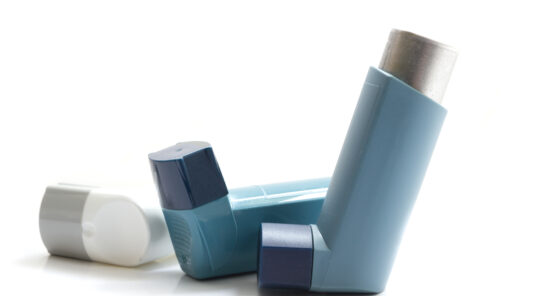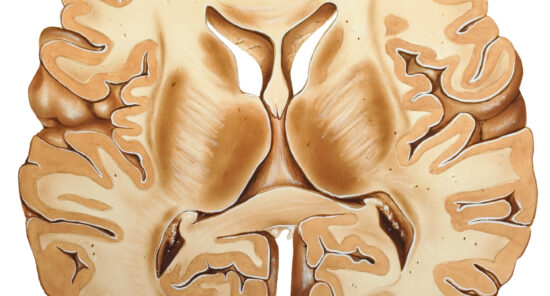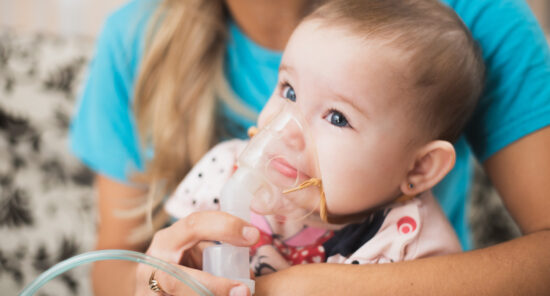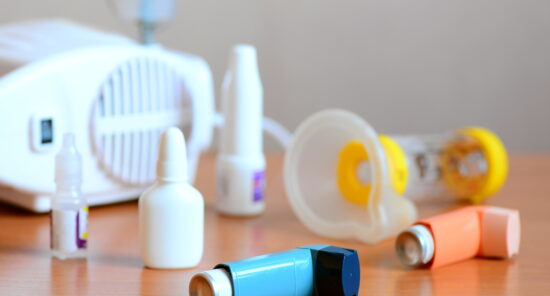Credit: Original article published here.Allergy season (unfortunately) is in full swing. Tree pollen typically pops up in early to late March and climate change may lead to earlier and longer pollen seasons. To cope with seasonal allergies – which are associated with itchy eyes, running noses, and even asthma flare ups – ENT specialist Dr. Aaron Westreich, of ENT and Allergy Associates in New York City, provides useful tips for managing and treating annoying, and even burdensome pollen allergies.
Credit: Original article published here.In a recent study, researchers evaluated treatment adherence in patients with asthma or chronic obstructive pulmonary disease (COPD) based on age and either once-daily or twice-daily dosing of medication. They generally sought to determine if prescribing once-daily dosing improved the suboptimal treatment adherence seen in this population. The study’s lead author, Heather De Keyser, MD, MSCS, reported that patients with asthma and COPD with once-daily medications had significantly improve daily treatment adherence compared with patients prescribed twice-daily medications. Researchers also found patients with COPD showed higher adherence than patients with asthma, which they noted may be due to an older cohort age. Findings from the study were presented in The Journal of Allergy and Clinical Immunology: In Practice. Treatment Adherence Improved With Once-Daily Medication The study assessed data from electronic medication monitors on date and time of inhaler actuations over 90 days among patients from the Propeller Health platform. Researchers compared adherence between once- and twice-daily schedules using retrospective regression models adjusted for age. According to the report, patients with once-daily schedules had a median daily adherence of 63.3% (interquartile range [IQR], 31.1-86.7) for asthma and 83.3% (IQR, 57.2-95.6) COPD, which was significantly higher than patients with
Credit: Original article published here.In a recent study, published in Frontiers in Neurology, researchers examined cortical thickness in patients with obstructive sleep apnea (OSA) to assess brain structure changes related to excessive daytime sleepiness associated with OSA. The team used surface-based morphometry (SBM) to identify potential thinning of the cortex in a population of middle-aged, male patients. The study’s co-lead authors, Yezhou Li and Jing Wang, reported subjective daytime sleepiness was associated with a decrease in cortical thickness, potentially leading to cognitive impairment. The researchers also noted the Epworth Sleepiness Scale (ESS) score might be a functional clinical marker of brain injury in patients with OSA. Daytime Sleepiness May Mark Brain Degradation in OSA Between August 2020 and June 2021, investigators enrolled 61 male patients from a single sleep center who had newly diagnosed OSA and were aged 25 to 60 years. Polysomnography and structural MRI assessments were performed on each participant, and ESS score was used to identify patients with excessive daytime sleepiness. Notably, compared to patients without excessive daytime sleepiness, investigators found the cortical thickness of patients with OSA and sleepiness was markedly reduced in the left temporal lobe, frontal lobe, parietal lobe, and bilateral pre- and postcentral gyri
Credit: Original article published here.A study conducted by researchers at Duke-NUS Medical School in Singapore has found that early morning classes in universities may be detrimental to academic performance. The research, recently published in Nature Human Behaviour, analyzed data from student Wi-Fi connections and log-ins to university and digital learning platforms, as well as activity data from specialized sensing watches to track the attendance and sleep patterns among tens of thousands of university students. Sleep scientists examined the day and night patterns of digital learning platform logins for 39,458 students to investigate whether early morning classes were correlated with waking up earlier and receiving less sleep. Lastly, they assessed the academic performance of 33,818 students and the number of morning classes they were enrolled in to evaluate the potential impact on their grade point average. The results of the study revealed classes starting at or prior to 8:00 a.m. were linked to lower attendance levels, with many students often sleeping past the start of classes. When students did attend these early classes, they lost around an hour of sleep, which negatively affected their academic performance. Additionally, the researchers found that having morning classes on more days of the week was
Credit: Original article published here.In a recent report, published in The Journal of Allergy and Clinical Immunology, researchers evaluated 3 recurrent wheezing phenotypes for links to development of childhood asthma among infants hospitalized with bronchiolitis. According to the study’s lead author, Jonathan Mansbach, most infants with severe bronchiolitis developed recurrent wheezing, as defined by National Heart, Lung, and Blood Institute (NHLBI) 2020 criteria. Furthermore, based on NHLBI phenotypes, 33-54% of patients developed asthma by 6 years of age. Recurrent Wheezing Associated With Childhood Asthma The investigators assessed 921 infants with bronchiolitis from 17 medical centers using NHLBI 2020 definitions for recurrent wheezing and 2 additional phenotypes, multitrigger and severe. A sensitivity analysis using the NHLBI 2007 criteria was also performed. A multivariable logistic regression model was used to identify the phenotype with the highest risk. According to the study, 632 (69%), 734 (80%), and 165 (18%) of 921 infants developed recurrent wheezing, multitrigger wheezing, and severe wheezing per NHLBI 2020 criteria by 4 years of age. The authors noted 296 (32%) infants met the NHLBI 2007 criteria for recurrent wheezing by age 3. A total of 862 (94%) infants had evaluable childhood data, of which 239 (28%) developed asthma by
Credit: Original article published here.A new study published in JAMA Network Open suggests patients with granulomatosis with polyangiitis (GPA) are more likely to achieve remission if treated with rituximab for induction therapy compared to cyclophosphamide [1]. Previous clinical trials, such as the RAVE trial [2], demonstrated that rituximab was noninferior to cyclophosphamide for induction of remission in severe ANCA-associated analysis (AAV), with neither treatment having a specific advantage for GPA in adjusted analysis. However, post-hoc analysis showed higher remission rate for rituximab than cyclophosphamide in those with PR3 ANCA antibodies. Given some trial limitations with enrollment of patients with both GPA and microscopic polyangiitis, the authors of this study sought to perform an emulation target trial with observational data to compare rituximab vs cyclophosphamide efficacy at inducing remission in a large number of unselected patients with GPA. Puéchal et al performed a comparative effectiveness study using observational data from 32 French hospitals as part of the French Vasculitis Study Group Registry. Groups were determined according to treatments received. They included patients with newly diagnosed or relapsing GPA by ACR Classification Criteria and/or Chapel Hill Consensus Conference nomenclature with active disease who received at least 1 infusion of rituximab or cyclophosphamide
Credit: Original article published here.Insomnia has been associated with worse outcomes in patients with chronic obstructive pulmonary disease (CPOD); however, the impact of concurrent insomnia on healthcare utilization and costs related to COPD is unknown, according to a study by Faith S. Luyster and colleagues. After their investigation, the researchers reported insomnia was associated with increased outpatient visits, hospitalizations, fills for corticosteroids and antibiotics, hospitalization lengths, and hospitalization costs within 12 months of insomnia diagnoses in patients with COPD. The data were published in Respiratory Research. Insomnia Worsens 1-Year Utilization and Cost Outcomes The study’s authors enrolled a retrospective cohort of veterans with COPD from the national Veterans Affairs administration database from 2012 to 2017. Insomnia was defined as an insomnia diagnosis or a prescription of over 30 doses of a sedative-hypnotic medication within 1 fiscal year. The primary end points of the study were resource utilization and costs related to outpatient visits and hospitalizations within 1 year of indexing. Patients without insomnia had their COPD-related resource utilization estimated based on prescription fills of corticosteroids and antibiotics, and outpatient visits or hospitalizations with a primary diagnosis of COPD. According to the authors, out of 1,011,646 patients with COPD (96% male; mean
Credit: Original article published here.A recent analysis, published in Frontiers in Pediatrics, evaluated the effects of physical activity (PA) in pediatric patients with asthma. The study’s authors noted their goal was to synthesize the sizable amount of new evidence generated by the refinement of PA and asthma studies over the prior 10 years. According to the investigators, the results of their systematic review and meta-analysis suggested that PA could improve forced vital capacity (FVC), forced expiratory flow between 25% and 75% of FVC (FEF25-75), and quality of life in asthmatic children; however, there was not evidence of an improvement in forced expiratory volume in the first second (FEV1) or airway inflammation. The authors of the meta-analysis included a total of 9 randomized controlled trials published to the PubMed, Web of Science, and Cochrane Library databases from 2010 to 2020. Studies were eligible if they enrolled patients under 18 years of age who met asthma diagnostic criteria guidelines and included different forms of PA in the intervention group for at least 4 weeks. Among the participants of the 9 trials, PA significantly improved FVC (mean difference [MD], 7.62; 95% CI, 3.46-11.78; P<.001) and FEF25-75 (MD, 10.39; 95% CI, 2.96-17.82; P=.006) lung function measures, the
Credit: Original article published here.Researchers, led by Sina Sadrifar, evaluated whether probiotic supplementation impacted symptoms and immune profile characteristics in patients with asthma. The authors cited the preventative effects of probiotics against a wide range of diseases as support that they could also provide a benefit in asthmatics. Based on their findings, the authors suggested probiotic supplementation reduced T-helper cell type 2 (Th2)-related interleukin (IL)-4 levels and improved pulmonary function test performance when compared with placebo after 8 weeks of treatment among asthmatics. The data were published in Allergy, Asthma & Clinical Immunology. Asthma Treatment With Probiotics Improves Outcomes This was a double-blinded, controlled trial that randomized 40 patients with asthma to 1 capsule of probiotics or placebo per day for 8 weeks. The primary end points of the study were changes in pulmonary function tests, IL-4 and interferon (IFN)-γ plasma levels, and various microRNAs (miR) expression levels from baseline after treatment. According to the report, probiotic treatment in patients with asthma significantly reduced their expression of miR-16 and miR146-a and levels of IL-4, while also concurrently increasing their expression of miR-133b. In addition, patients with asthma had significant improvements in forced expiratory volume over 1 second and forced vital
Credit: Original article published here.Getting a good night’s sleep is already known to be essential for maintaining overall health; however, according to a study presented at the American College of Cardiology’s Annual Scientific Session Together With the World Congress of Cardiology, it could potentially add years to your life. The study found that young people who have more beneficial sleep habits are incrementally less likely to die early. Furthermore, the data suggest that poor sleep patterns may contribute to about 8% of deaths from any cause. Highlighting the importance of getting restful sleep and not just enough hours of sleep, Frank Qian, MD, an internal medicine resident physician at Beth Israel Deaconess, stated in a recent press release: “We saw a clear dose-response relationship, so the more beneficial factors someone has in terms of having higher quality of sleep, they also have a stepwise lowering of all cause and cardiovascular mortality.” The study included data from 172,321 participants from the National Health Interview Survey between 2013 and 2018. The survey, fielded each year by the Centers for Disease Control and Prevention, includes questions pertaining to obtaining information about sleep and sleep habits. According to the researchers, this study is the











